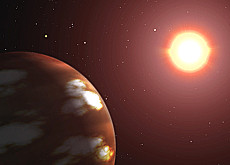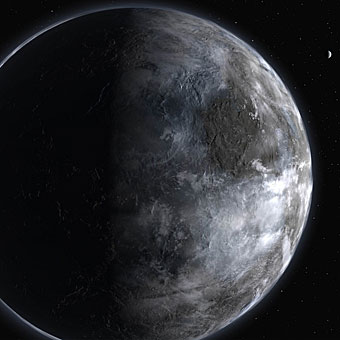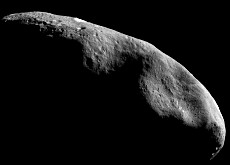Small Swiss observatory finds ice planet

An observatory in southern Switzerland has detected the first planet made of ice. Located outside the solar system it is about the same size as Neptune.
The find was made by a team of four astronomers from the St Luc observatory in canton Valais and Geneva University, with Lady Luck on their side.
“It’s really the first time that we’ve found the transit of such a small planet and the first time we know precisely the mass and the size of a planet that’s not a giant gaseous one,” Frédéric Mallmann, head of the observatory, told swissinfo.
“It’s the first sort of ocean planet that has ever been found and it’s a great step towards [finding] other planets that resemble Earth.”
Using a 24-inch telescope, the team measured the light coming from a star 30 light years away, which is not very far in astronomical terms. Team members found it was dimmed a little for about an hour, meaning that this was the time when the planet was passing in front of its star.
Hot ice
“It’s a planet with a radius four times that of the Earth. It’s orbiting very close to its star – a few million kilometres, so it’s a very hot planet made mainly of hot ice with a temperature of more than 300 degrees,” Mallmann explained.
Hot ice is a situation in which under very great pressure water stays like ice. It cannot be found naturally on Earth but has been made in laboratories, he added.
The team were going to spend several nights on the lookout for the planet but struck lucky immediately.
“We had clear skies in April and we were really lucky because we had just a five per cent chance [of discovery] so the odds were against us… We found it the very first night we observed it,” Mallamann commented.
The planet already has a name or rather a number – Gliese 436 b. One of the smallest extrasolar planets, it was discovered orbiting the star Gliese 436 in 2004. An orbit takes less than three days.
Super-Earth
Swiss and European astronomers last month said they had discovered the first planet outside our solar system able to support life
The new “super-Earth”, so called because its mass is five times that of the Earth, lies 20.5 light years or 120 million trillion miles away.
It was discovered by a team of European astronomers led by researchers from Geneva University.
swissinfo, Robert Brookes
Gliese 436 is a dim, red dwarf star about 30 light years away from Earth in the constellation of Leo.
Its planet – Gliese 436 b – was discovered orbiting the star in 2004.
The planet’s surface temperature is high, but not as high as other planets in similar orbits because the star is so dim and cool.
The François-Xavier Bagnoud observatory is located above St Luc, a small village in the Val d’Anniviers in canton Valais.
It is named after François-Xavier Bagnoud, a helicopter pilot specialised in rescue operations, who died aged 24 in Mali during the 1986 Paris-Dakar rally.
The observatory is managed by a non-profit foundation.

In compliance with the JTI standards
More: SWI swissinfo.ch certified by the Journalism Trust Initiative



You can find an overview of ongoing debates with our journalists here . Please join us!
If you want to start a conversation about a topic raised in this article or want to report factual errors, email us at english@swissinfo.ch.